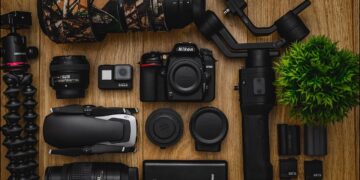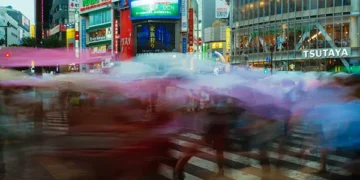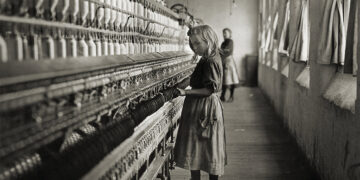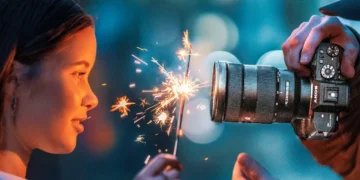Photography in Journalism and documentary work
Photography has long been an essential tool for journalists and documentary makers. It is a powerful medium that allows these professionals to convey messages, document events, and tell stories in a way that words alone cannot. Photography can capture a moment in time, preserve it, and share it with a global audience.
In journalism, photography is used to illustrate and enhance written news stories. In many cases, photographs are the first thing that a reader sees when they pick up a newspaper or browse an online news site. An image can quickly convey the essence of a story, grabbing the reader’s attention and encouraging them to read further.
Photographs can also provide vital evidence in news reporting. Images of protests, wars, and natural disasters are often used to document events and provide an accurate record of what happened. They can also be used to highlight social issues and injustices, providing a visual representation of a problem that might not be apparent from written reports alone.
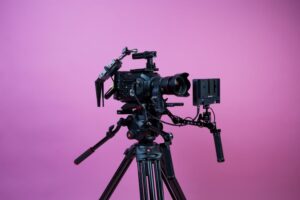
In documentary work, photography is often the primary medium used to tell a story. Documentaries can take many forms, from photo essays to feature-length films. In each case, photographs are used to document people, places, and events, providing a visual record of the subject matter.
Documentary photography is often used to explore social issues and bring attention to topics that might not otherwise receive mainstream coverage. Photographs can provide a way to show the impact of social issues on real people and communities, giving a voice to those who might otherwise go unheard.
The use of photography in documentary work can also provide a historical record of events. Photographs can capture moments in time that might otherwise be forgotten, allowing future generations to learn about the past and understand how events have shaped the world we live in today.
One example of the power of photography in documentary work is the work of Dorothea Lange. Lange was a documentary photographer who worked during the Great Depression. Her photographs, including the iconic “Migrant Mother” image, documented the struggles of people living in poverty during this period. Lange’s images provided a powerful visual record of the hardships faced by many Americans during this time and helped to raise awareness of the need for social change.
Another example of the use of photography in documentary work is the work of James Nachtwey. Nachtwey is a photojournalist who has covered many of the world’s most significant conflicts and social issues over the past few decades. His images of war, famine, and disease have helped to raise awareness of these issues and bring attention to the people affected by them.
In recent years, the rise of social media has made photography even more important in journalism and documentary work. With platforms like Instagram and Twitter, photographers can share their work with a global audience in real-time. This has provided a way for photographers to reach new audiences and has helped to make their work more accessible to the public.
However, the use of photography in journalism and documentary work also raises important ethical questions. For example, photographers must consider issues of consent when taking photographs of people, particularly those in vulnerable situations. They must also consider the impact that their images might have on the subjects and communities they photograph.
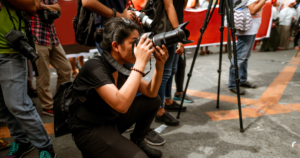
To address some of these ethical concerns, many news organizations and documentary makers have established ethical guidelines for their photographers. These guidelines often require photographers to obtain consent from subjects before taking their photographs, particularly in situations where the subjects might be vulnerable or at risk. They may also require photographers to avoid staging photographs or altering them in a way that might misrepresent the truth.
Another important consideration is the impact that photographs can have on the subjects and communities they document. In some cases, photographs of people in vulnerable situations can be exploitative, reinforcing negative stereotypes or perpetuating harmful narratives. Photographers must be aware of these issues and strive to represent their subjects in a fair and accurate manner.
To address these concerns, some documentary makers have adopted a participatory approach to their work. This involves working closely with the subjects and communities they document, allowing them to have a say in how they are represented in the final product. This approach can help to ensure that the subjects are portrayed in a way that accurately reflects their experiences and perspectives.
Despite these ethical concerns, photography remains a vital tool in journalism and documentary work. It provides a way to document the world around us, telling stories that might otherwise go untold. Photographs can inspire us, challenge us, and encourage us to take action. As such, it is essential that photographers continue to use this medium responsibly, with an awareness of the impact that their work can have on the world.
One of the most significant advantages of photography in journalism and documentary work is its ability to reach a wide audience. With the rise of digital media, photographs can be shared instantly across the world, providing a platform for stories to be told and issues to be addressed. Social media platforms, in particular, have made it easier for photographers to share their work with a global audience, bypassing traditional media channels and reaching new audiences.
Photography is also a versatile medium that can be used in a variety of ways in journalism and documentary work. From photojournalism to documentary filmmaking, photographs can be used to tell stories in a range of formats. Photographs can also be used in conjunction with written articles or spoken narratives, providing a more immersive and engaging storytelling experience.
In photojournalism, photography is often used to convey the emotion and impact of a news story. The use of powerful images can help to communicate the urgency and significance of an event, inspiring readers to take action or engage with the issue. In documentary work, photographs are used to tell a more in-depth story, providing a visual record of the subject matter and exploring the nuances and complexities of an issue.
Overall, the use of photography in journalism and documentary work is essential for telling stories and communicating important issues. It is a powerful medium that has the ability to engage and inspire audiences, providing a way to document the world around us and shed light on important social issues. However, photographers must also be aware of the ethical considerations involved in their work, striving to represent their subjects in a fair and accurate manner while avoiding the potential for exploitation or misrepresentation.
Conclusion
In conclusion, photography is a valuable tool in journalism and documentary work. Its ability to convey emotion and capture the essence of a story makes it an essential medium for communicating important issues and events. However, it is important for photographers to consider the ethical implications of their work and strive to represent their subjects in a fair and respectful manner. With responsible use, photography can continue to play a vital role in telling stories and creating social change.

